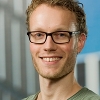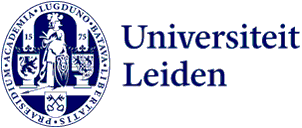2,624 search results for “quantum mechanisms” in the Public website
-
A computational study of structural and excitonic properties of chlorosomes
The long-held desire - to link structure directly to function and to explain molecular mechanisms based on basic chemical or physical principles - is finally coming closer, satisfying not only our scientific curiosity but also offering new solutions to the many challenges in the field of health, energy…
-
Quantum Meets Leiden: IBM lecture & mini-symposium
Conference
-
Quantum dots in microcavities: From single spins to engineered quantum states of light
PhD defence
-
Richard Gill member of FQXi
Prof. Dr. Richard Gill has recently joined as a member of the Foundational Questions Institute (FQXi). FQXi is an international association of scientists who explore the foundations of physics and cosmology.
-
Theoretical Physics
In the spirit of 'unity in diversity', our objective is to promote insight into and appreciation for the wonder that the same physical laws and mathematical concepts apply to the whole of nature, from the largest to the smallest energy and length scales. We strive for the application of abstract theoretical…
-
New method to find Majorana’s tested for the first time
Jianfeng Ge and Milan Allen of Leiden University look for majorana quasiparticles using shot noise measurements
-
Van Marum Colloquia
The "Van Marum Colloquia" are a collaborative lecture series between the LION and LIC institutes, focusing on fundamental and applied surface science.
-
The activation mechanisms of G protein-coupled receptors: the case of the adenosine A2B and HCA2/3 receptors
Promotor: A.P. IJzerman
-
Copper(II) Tris(2‐pyridylmethyl)amine Complex through a Stepwise Mechanism
The mechanism of the electrochemical reduction of dioxygen by a mononuclear pyridylalkylamine copper complex was investigated (see picture). It was shown that in neutral aqueous solution dioxygen undergoes stepwise reduction, wherein hydrogen peroxide plays a key role. The rate constants determined…
-
Rediscovering the lost pedal techniques on harps with a single‐action pedal mechanism
The “harpe organisée”, 1720-1840: Rediscovering the lost pedal techniques on harps with a single-action pedal mechanism, is the title of Maria Christina Cleary's PhD thesis. This is the first monographic study on harp pedal techniques, tracing the historical way to pedal on the early pedal harps with…
-
 Bas ter Braak
Bas ter BraakFaculty of Science
-
 Marije Niemeijer
Marije NiemeijerFaculty of Science
-
Sweeping vacuum gravitational waves under the rug
One of the most important correlation functions in physics, especially in cosmology, is the energy density, which describes how much energy is present at each point in spacetime due to matter fields. A key contribution to the energy density of the primordial universe comes from gravitational waves (GWs),…
-
Imperfections: using defects to program designer matter
Errors are everywhere, and mechanical failures are especially common: buckled grain silos and cracked support columns are, justly, seen as an issue to be avoided.
-
New water jet cutter for Fine Mechanical Department
The Fine Mechanical Department's (FMD) new Wardjet A0612 will cut anything using a 4000 bar water jet. This enables the FMD to work faster, more accurately, and to perform more versatile jobs.
-
'Bigger is different' - the unusual physics of mechanical metamaterials
Mechanical metamaterials have been found to display surprising features, on top of their unusual properties such as shape morphing and programmability. When the materials are a step in size larger, new rules seem to apply. This was discovered by researchers at AMOLF and the universities of Leiden and…
-
On the geometry of demixing: A study of lipid phase separation on curved surfaces
Like a mixture of oil and water, lipid membranes separate into two liquid phases.
-
Admission requirements
To be eligible for Astronomy at Leiden University, you must meet the following admission requirements.
-
Admission requirements
To be eligible for Astronomy and Education at Leiden University, you must meet the following admission requirements.
-
 Jay te Beest
Jay te BeestFaculty of Science
-
How does the European Stability Mechanism safeguard financial stability?
On Wednesday 5 June, Kalin Anev Janse, Secretary-General and Management Board Member of the European Stability Mechanism (ESM), was invited to give a lecture on 'Bridging decision-making: a new direction for Europe? Prioritising financial stability: the European Stability Mechanism and the Banking U…
-
On shape and elasticity: bio-sheets, curved crystals, and odd droplets
Because thin systems can deform along the thickness with relative ease, the interplay between surface mechanics and geometry plays a fundamental role in sculpting their three-dimensional shape.
-
Putting a spin on it: amyloid aggregation from oligomers to fibrils
This thesis focuses on amyloid proteins, a class of proteins that convert into amyloid fibrils.
-
'Stephen Hawking put abstract science on the map'
Theoretical physicist Stephen Hawking (76) passed away on 14 March at his home in Cambridge, having been a long-term sufferer of the muscular disease ALS. A number of Leiden scientists look back at the life and scientific career of this world-famous physicist. 'He was very approachable and extremely…
-
using a technological intervention: Investigating the effect grouping mechanism using anonymity aspect in reducing bias and prejudice in online classroom
In a virtual game environment, one of the positive effects of anonymity is the absence of one's prejudice toward others, which can give a person the freedom to change and experiment (Bartle, 2003). This project will adopt anonymity to be added to online cross-cultural collaborative learning in higher…
-
 Anna Dawid-Lekowska
Anna Dawid-LekowskaFaculty of Science
-
Bachelor's research on ultra-thin nanochip nominated for Young Talent Award
Using 2D materials, physics student Romme van der Kemp developed a nanochip that is extremely small ánd scalable. This is needed to make all kinds of technologies better, faster and smaller. He has been nominated for the FWN Young Talent Award 2023 for his research.
-
Measuring the pull of gravity on a micron-sized particle
Tjerk Oosterkamp of the Leiden Institute of Physics managed to do the first-ever measurement of gravity on a tiny particle - just 0.43 milligrams - where the quantum regime starts. He explains in Physics World why this is so challenging.
-
Low-temperature spectroscopic studies of single molecules in 3-D and on 2-D hosts
Spectroscopic studies on fluorescent single molecules in organic condensed matter does not only provide information about the molecule itself, but also its near environment. By suppression of phonon-induced broadening of spectral lines through cooling to low temperatures, small changes in the spectral…
-
Light manipulated with large artificial atom
Physicists have manipulated light with large artificial atoms, so-called quantum dots. Before, this has only been done so well with actual atoms. It is an important step towards light-based quantum technology. Publication on August 30th in Nature Communications.
-
Mechanism MRI amplifying agents explored
Special amplifying agents can make MRI scanners and NMR techniques hundreds of times more sensitive. Leiden physicists have now found a method to test their efficiency. More sensitive MRI scans could for example improve our understanding of cystic fibrosis or Parkinson’s disease. Publication in PCCP…
-
Compressed Σ-Protocol Theory
In analogy to mathematical proofs, the goal of a proof system is for a prover to convince a verifier of the correctness of a claim.
-
Cancer cell mechanism found to be used against itself
Leiden biophysicists have found a new possible way to attack cancer cells. They have located ‘sinkholes’ on the cells where receptor proteins disappear from the surface. If a drug could push these proteins towards those areas, it would kill the cancer cell.
-
Leiden involved in three out of five Physics Vrije Programma grants
NWO has assigned Physics Vrije Programma grants to five collaborations of physicists. Leiden University is involved in three of them.
-
 Peter Bouwman
Peter BouwmanFaculty of Science
-
Tom Lubensky appointed 2018 Lorentz Professor
Coming spring, Professor Tom Lubensky from the University of Pennsylvania will be the 64th Lorentz Professor at the department of Theoretical Physics. He is a pioneer in the field of theoretical soft matter physics and winner of the prestigious Buckley Condensed Matter Prize. During his stay in Leiden…
-
100 Years of Spin and Lorentz Medal Award Ceremony
In 1925, two young physicists from Leiden University, George Uhlenbeck and Samuel Goudsmit, proposed a radical idea: spin. Their bold hypothesis quickly came to play a key role in physics and formed the basis for later breakthroughs in quantum mechanics. We are celebrating the anniversary of this discovery…
-
NWO-XS grants for two innovative research projects
Two Leiden Science researchers received an NWO-XS grant for their research. Both projects are highly promising, but also high-risk. Macrophages that trap bacteria and data storage made from 2D materials convinced the board of their potential.
-
Léo Ducas appointed professor of Mathematical Cryptology
In cryptography, the sky is the limit according to the new professor Mathematical Cryptology Léo Ducas. He already designed several cryptosystems as part of his research at the Centrum Wiskunde & Informatica (CWI), some of which might soon be adopted as new international standards. Since December,…
-
Try-out Day at Leiden University
On Friday April 6th, Leiden University organizes its biannual try-out day. We pay a visit to Physics and Astronomy, which saw their student numbers almost quadruple over the past decade.
-
Surface plasmon lasers
Surface plasmons (SPs) are surface waves at the interface between a dielectric and a good metal, and are formed by the interaction between light and the free electrons at the metal-dielectric interface. They provide strong field confinement for optical fields, opening new possibilities for enhanced…
-
The symmetry of crystals and the topology of electrons
Promotor: J. Zaanen, Co-Promotor: V. Juricic
-
Celia Fonseca Guerra appointed as Professor of Applied Theoretical Chemistry
Since February 1st, 2017 Célia Fonseca Guerra is appointed as professor at the LIC with a chair in applied theoretical chemistry. She will be a member of the Theoretical Chemistry group. Her research interests are related to bioinorganic chemistry and catalysis and her appointment at the LIC will strengthen…
-
Aspects of cosmic acceleration
The focus of the dissertation
-
Life on a Strip
Joanna Krenz defended her thesis on 15 May 2018.
-
Photoinduced processes in dye-sensitized photoanodes under the spotlight: a multiscale in silico investigation
With increasing carbon dioxide levels in the atmosphere and their detrimental effect on the global climate, modern society needs to push for more renewable energy sources. Storing widely accessible and abundant solar energy in chemical bonds in the form of molecular fuel via artificial photosynthesis…
-
From grains to planetesimals: the microphysics of dust coagulation
Promotor: Prof.dr. A.G.G.M. Tielens, Prof.dr. C. Dominik (UvA)
-
Uniform infinite and Gibbs causal triangulations
Promotor: Richard D. Gill
-
How cool is LEGO®? Leiden physicists use it for ice cold research
Tjerk Oosterkamp's group is conducting what is perhaps the coldest research in the world. The researchers have cooled a sensor to below 2 millikelvin - almost as cold as absolute zero. This allows them to make extremely sensitive measurements. PhD candidate Jaimy Plugge helped build the setup: ‘We are…
-
Conference The Development of Normative Powers of UN Investigative Mechanisms
The Grotius Centre for International Legal Studies in collaboration with the University of Geneva, the Chinese Journal of International Law (ChineseJIL, OUP) and the European Society of International Law (ESIL), are pleased to invite public international scholars and researchers to attend a conference…
